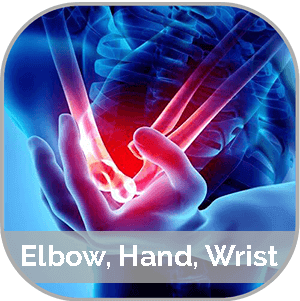 Deriving its name from the shape the finger takes when pressing the trigger of a pistol, trigger finger occurs when the tendon that allows the finger to bend and straighten becomes inflamed and swollen, thus restricting movement through the tendon sheath. While normally the tendon can glide smoothly through this band of tissue, the swollen area can make this movement painful, difficult, and even impossible. Successful straightening and bending of the finger usually will be accompanied by a popping or snapping sound as the swollen nodule is forced through the sheath. In most instances, trigger finger develops as a result of a repetitive motion, such as flicking a lighter or playing an instrument, that requires the thumb and fingers to move often. However, any forceful thumb or finger movement, as well as sustained grasping, can lead to trigger finger.
Deriving its name from the shape the finger takes when pressing the trigger of a pistol, trigger finger occurs when the tendon that allows the finger to bend and straighten becomes inflamed and swollen, thus restricting movement through the tendon sheath. While normally the tendon can glide smoothly through this band of tissue, the swollen area can make this movement painful, difficult, and even impossible. Successful straightening and bending of the finger usually will be accompanied by a popping or snapping sound as the swollen nodule is forced through the sheath. In most instances, trigger finger develops as a result of a repetitive motion, such as flicking a lighter or playing an instrument, that requires the thumb and fingers to move often. However, any forceful thumb or finger movement, as well as sustained grasping, can lead to trigger finger.
If you’re experiencing the discomfort and reduced functionality of trigger finger, our skilled orthopaedic hand surgeons offer a range of non-surgical and surgical options that may be able to help.
Non-Surgical Treatments for Trigger Finger
The first sign of trigger finger often will be soreness located at the base of the affected finger or thumb. You may also notice a catching sensation followed by a clicking or popping sound when you bend or straighten the finger. As the condition worsens, the pain may increase and the finger could lock in either a straight or bent position. Fortunately, non-surgical treatment can often provide substantial relief and possibly eliminate the symptoms of trigger finger. Non-invasive methods, such as resting the finger and taking anti-inflammatory medication, may be sufficient to alleviate your concern. In other cases, splinting, steroid injections, and physical therapy may be recommended. In the event that conservative options prove ineffective, your orthopaedic physician may suggest a surgical approach.
Surgical Options for Trigger Finger
If you’ve been suffering with trigger finger for a long period of time or have developed the condition as a result of diabetes, non-surgical treatment options may not be as successful. Our orthopaedic surgeons are extensively trained in the latest minimally invasive endoscopic techniques, which can help you to heal faster than traditional open surgery. If after trying more conservative methods your symptoms continue, we can perform an operation to widen the tendon sheath. Recovery typically will be brief and you may be able to move your fingers normally again immediately following the operation. Depending on your level of stiffness, we may also recommend physical therapy following the procedure.




